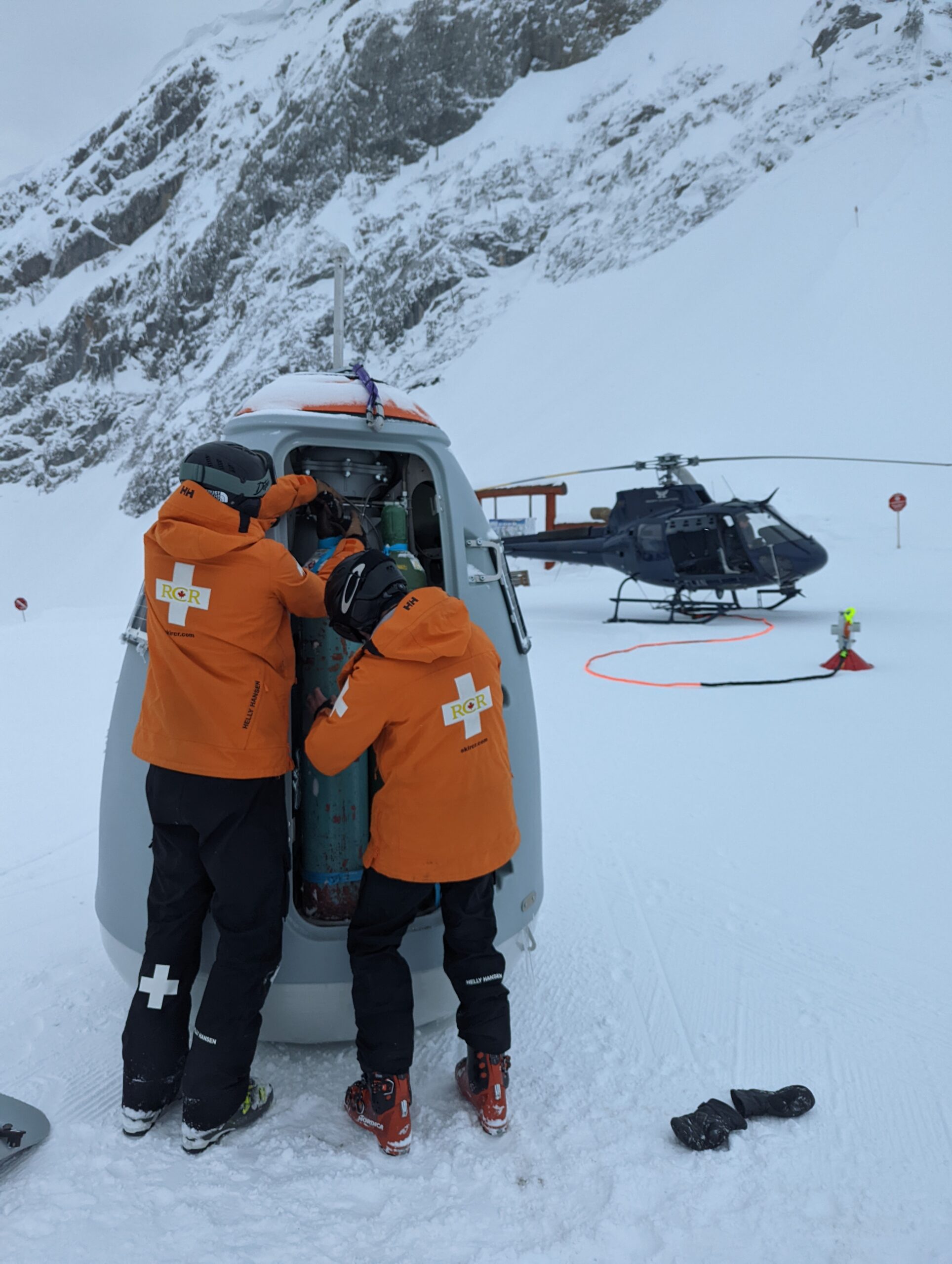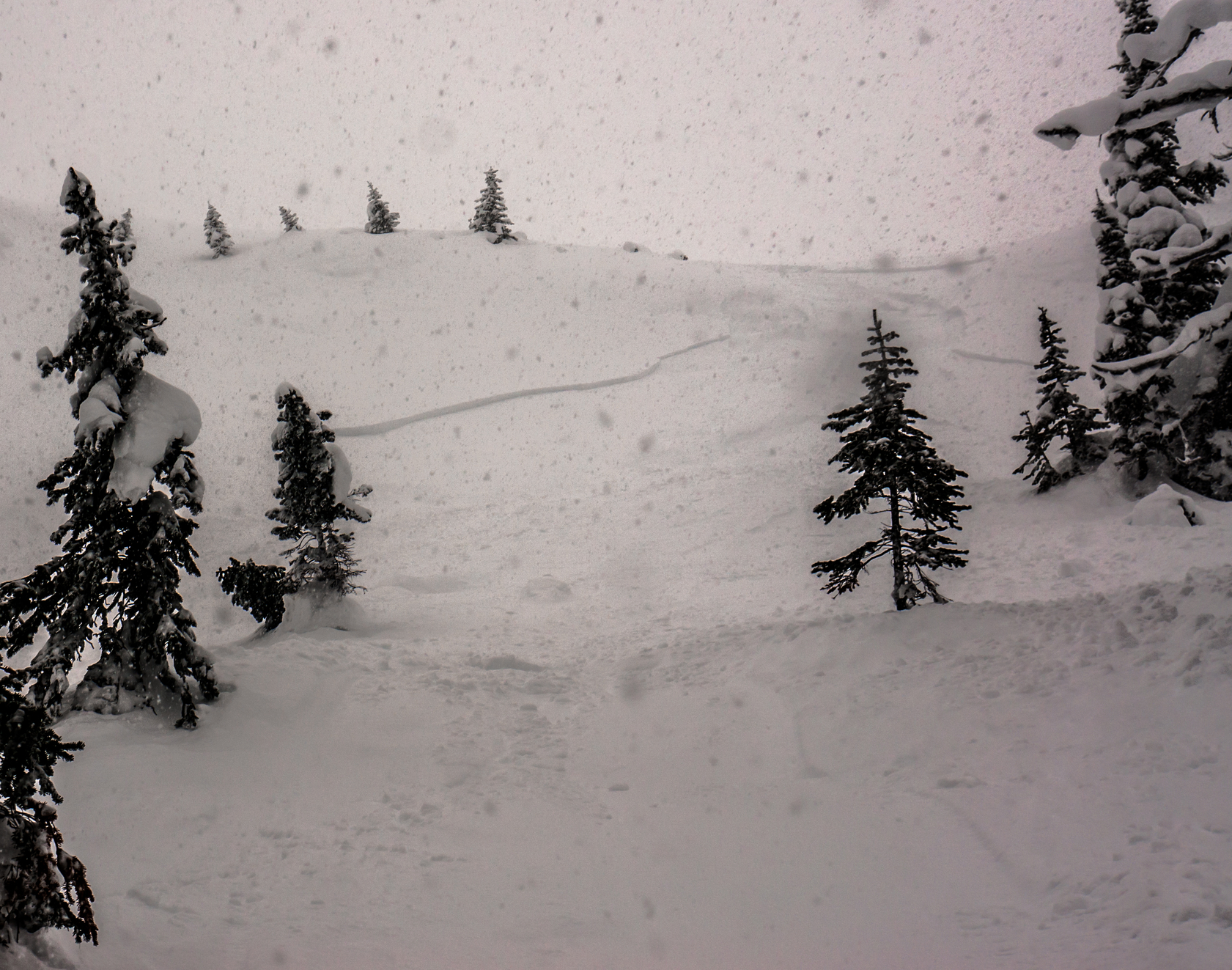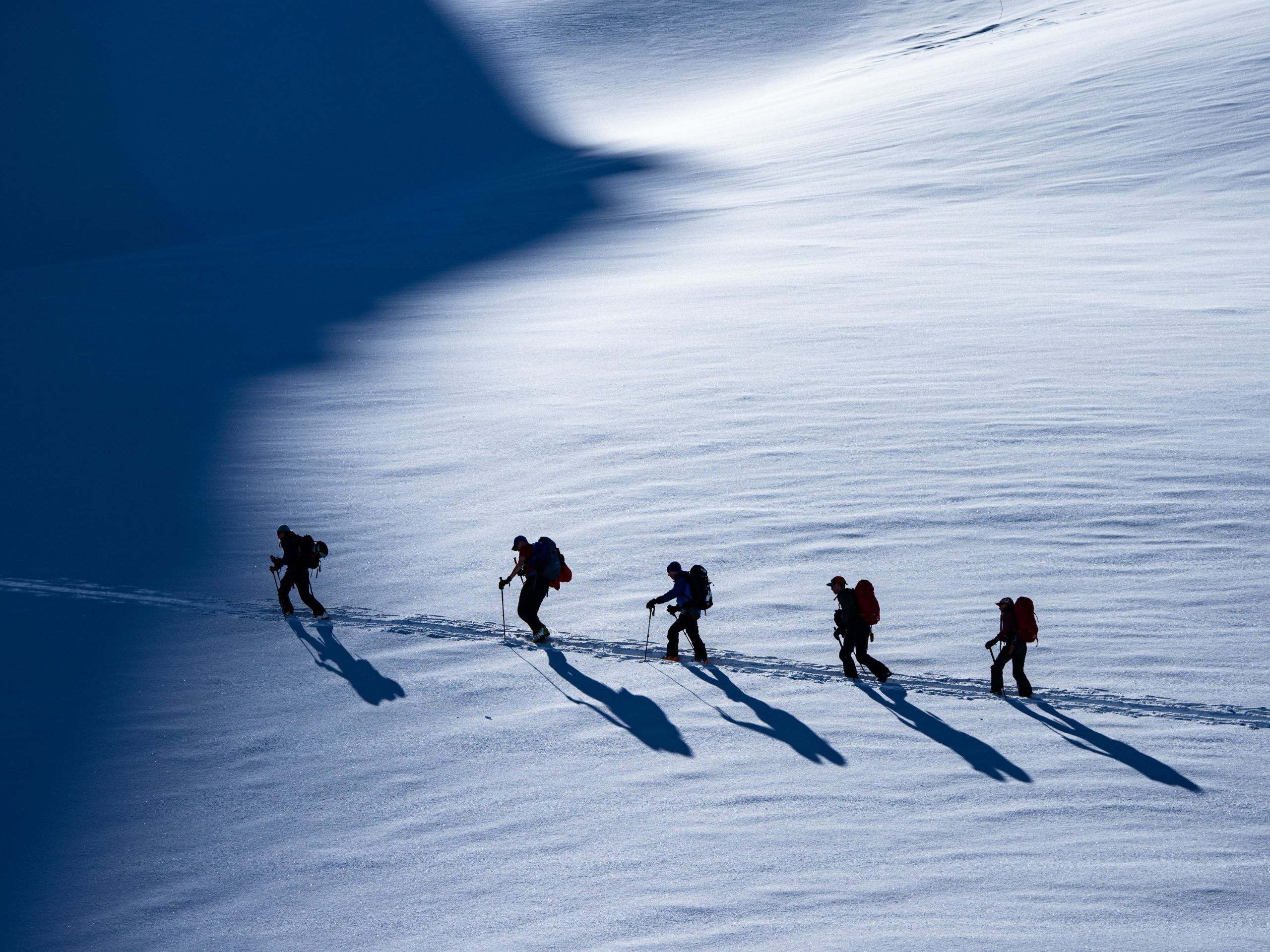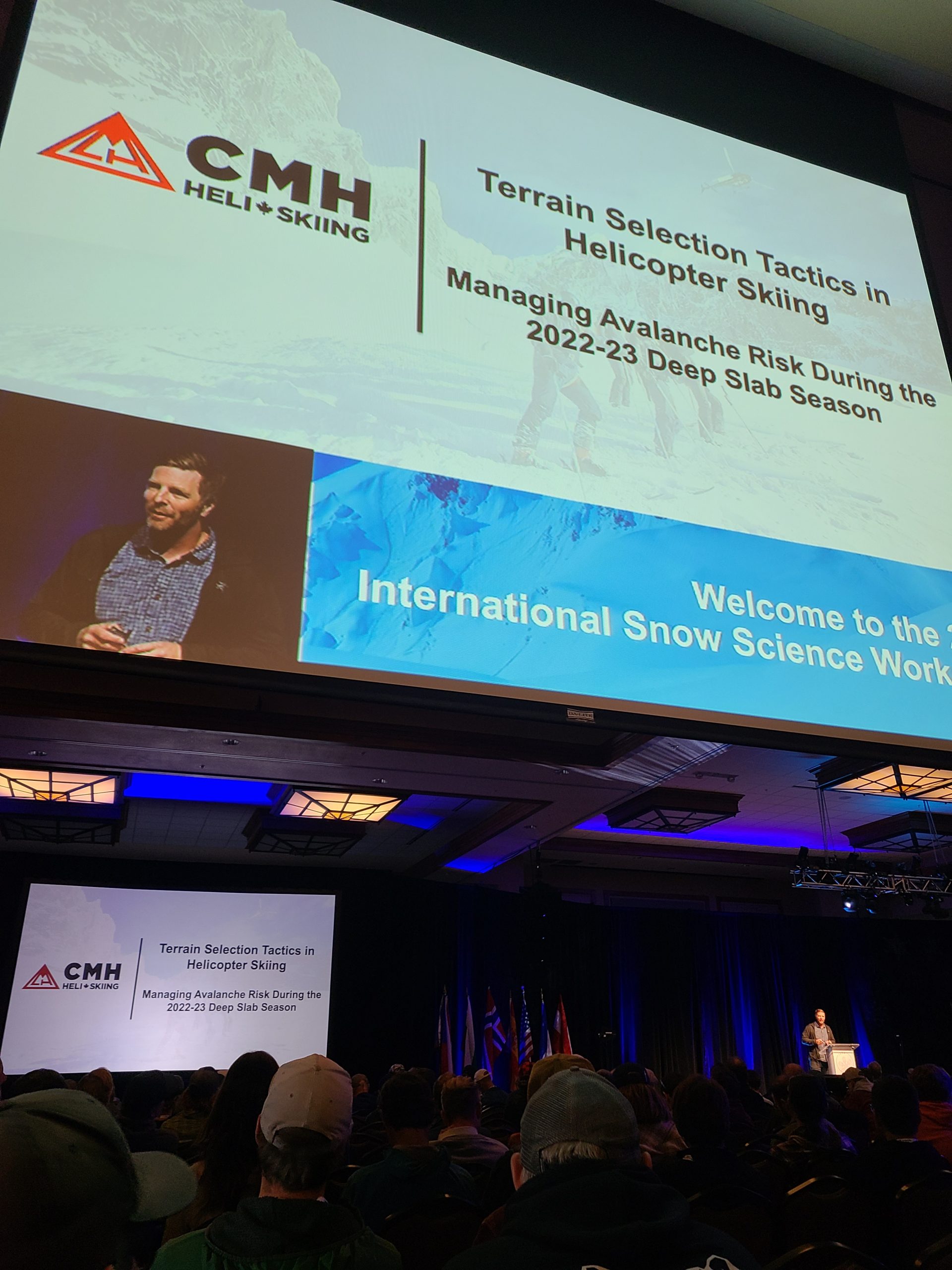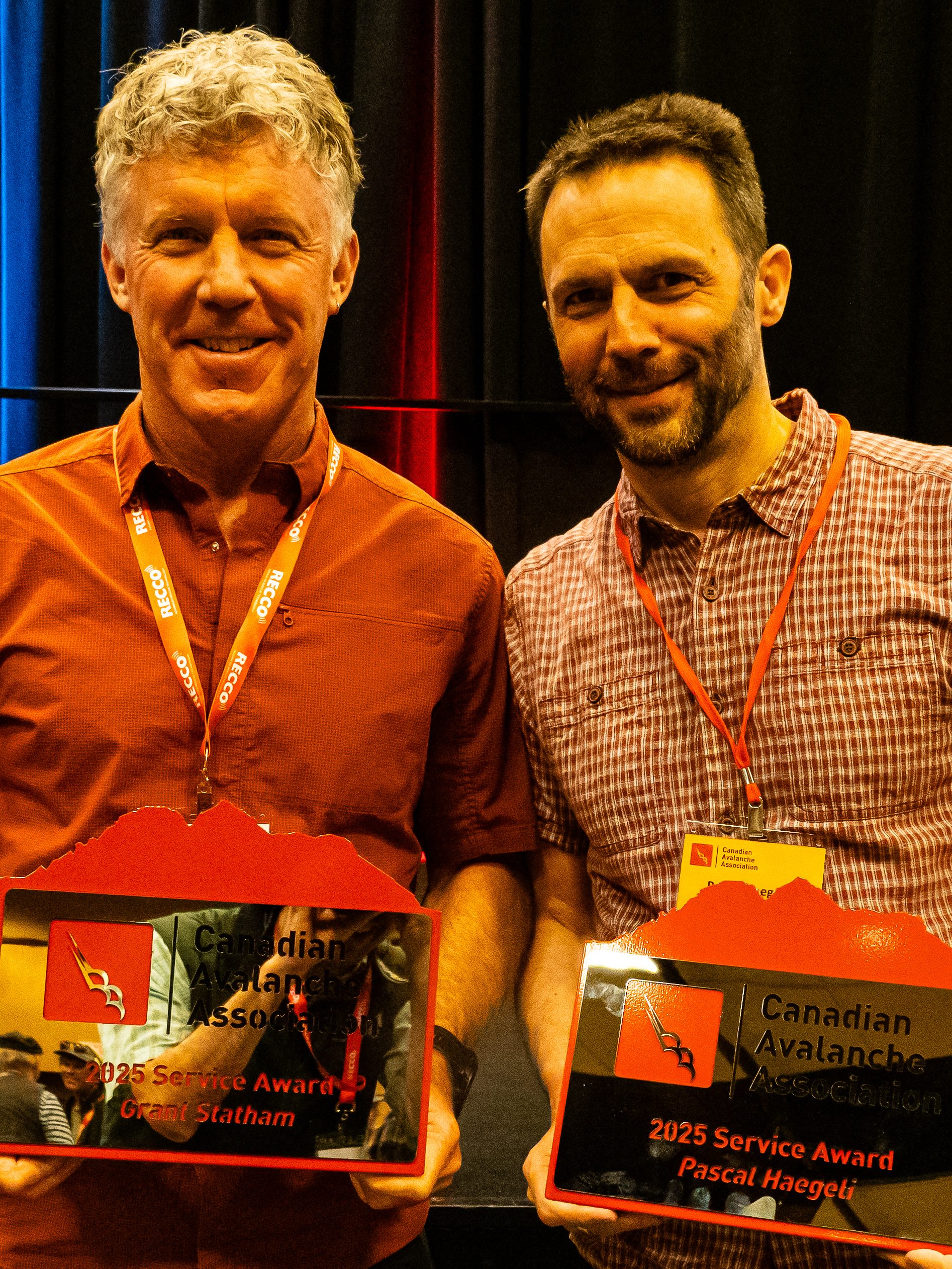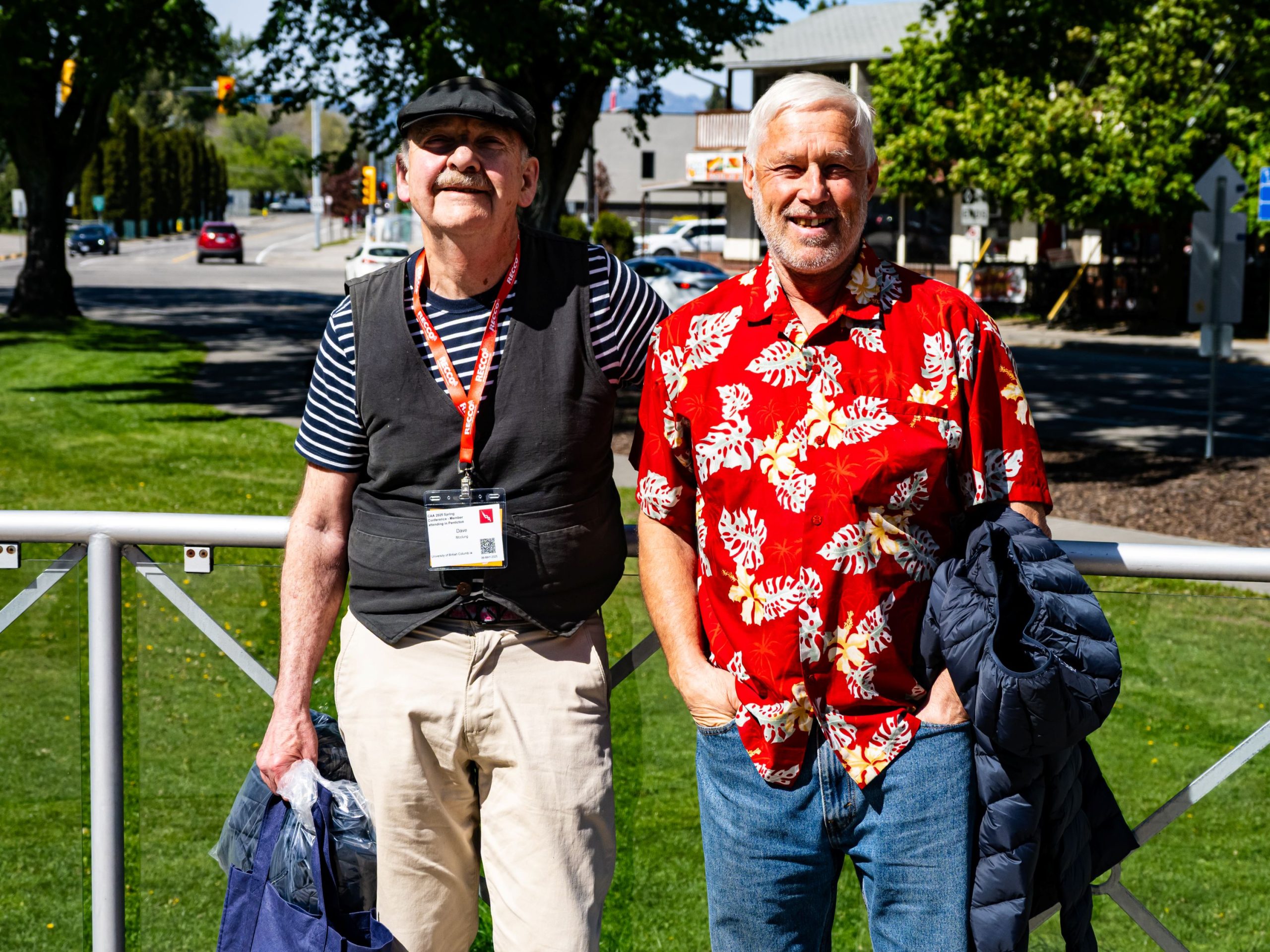By Tyler Carson, Forecasting Supervisor, Fernie Alpine Resort
This article was initially published in The Avalanche Journal, Volume 135, Summer 2024
PRIOR TO THE 2020-21 SEASON, Fernie Alpine Resort (FAR) partnered with TAS by MND, Avatek, and Mountain Technical Canada Inc. to provide a demonstration site for their O’bellX Options+ remote avalanche control system (RACS) at the 2020 International Snow Science Workshop (ISSW). The goal was to demonstrate the application of the technology at a ski area, which had not yet been explored in the Canadian market, and provide an easily accessible opportunity for other sectors of the avalanche industry to observe this device in operation.
RACS have been widely used at European ski areas for upwards of 30 years, and more recently at U.S. ski areas such as Alta, Jackson Hole, Squaw Valley, and Taos. FAR’s avalanche program has similarities to these American resorts, and is comparable to programs found in many Canadian industrial resource and transportation programs where RACS have gained traction. Our operation features complex terrain that can produce size four avalanches. FAR operates a highly intricate and broad risk treatment program, including explosives and terrain closures, to manage a variety of conditions in this terrain. Our goal is always to safely open as much terrain as possible.
LOCATION
The O’bellX unit provided to FAR was powered by a hydrogen and oxygen mixture, and was remotely controlled with a tablet via radio communication. It was installed in the Dancer 5 start zone (Fig. 1) in order to optimize the demonstration purposes of the installation and because it would serve as an effective addition to our avalanche mitigation program. The Dancer 5 start zone is the largest in a series of start zones (Fig. 1). Avalanches that initiate in Dancer 5 can affect the second largest start zone in the Lizard bowl—the Dancer South Fan. This combination of paths and start zones can pose avalanche hazards to the public in the south end of Lizard Bowl, to staff travelling on the Tower 6 road corridor, and, at times of heightened hazard, the fixed infrastructure of upper Deer and upper Lizard runs (Fig. 2). This area is a major corridor for beginner skiers and all key mountain operation departments. More drastic measures to reduce exposure during times of high hazard reduces the product for guests and increases the possibility of guest and snowmobile interaction as all traffic is routed down a shared run away from the runout zones of Lizard Bowl. It can also affect the liaison terrain between Currie and Lizard Bowls, and reduces the availability of Easter Bowl from the Timber side.
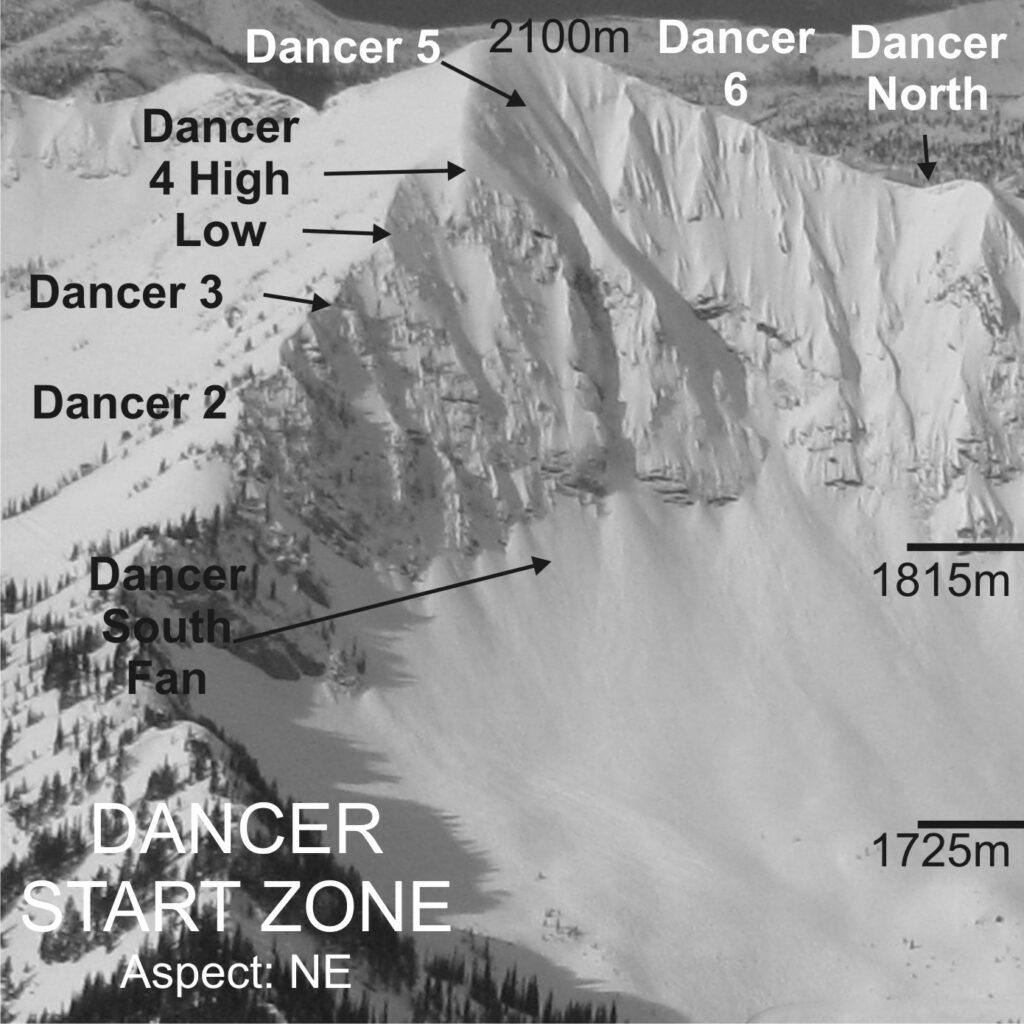
The challenge with conducting avalanche control in Dancer 5 is the inability to target it with the Lizard Avalauncher due to the proximity of the infrastructure surrounding the start zone. This includes the unload terminal of the Polar Peak chairlift, the Polar patrol hut, Polar explosives magazine, and the Lizard ridgeline safety system. The alternate to using the Avalauncher involves patrol teams skinning uphill to Polar Peak from Currie Bowl to access the Polar magazine, and then targeting the start zone with hand charges. The success of this strategy is highly dependent on acceptable avalanche and travel conditions.
The key to the success of this strategy is to consider the operational goals of the day, which are based on avalanche hazard and weather. Sending teams to Polar Peak is beneficial to the Lizard Bowl control sequence, but at times places resource strains on the Timber and Currie Bowl control sequence. There is often a fine line of benefit depending on the operational goals of the day. Our hope was installing the O’bellX would reduce some of these challenges.
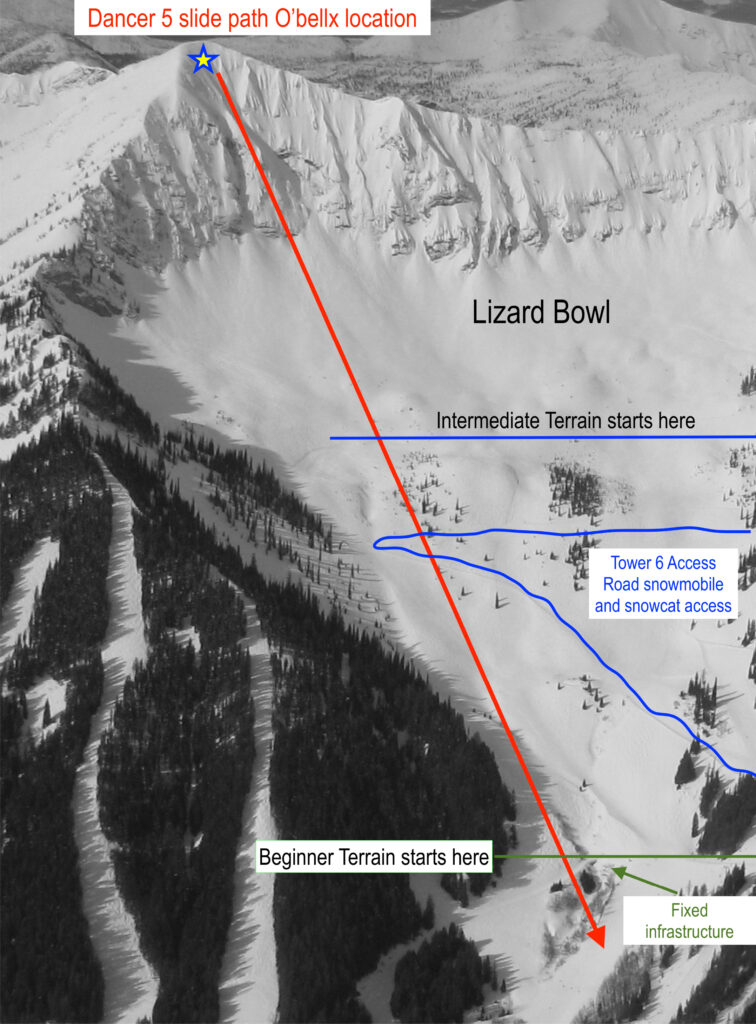
ASSESSING THE BENEFITS: 2020-21
The ability to fire the O’bellX unit remotely as and when required during times of suitable hazard, unsuitable weather, and high human resource demand outwardly appeared as the largest and most obvious benefit. Anecdotally, firing as and when may have also reduced the return rate of larger destructive avalanches because of the increased regularity and consistency of control.
Review of the efficacy of the O’bellx was challenged due to the timing of final commissioning of the unit. Delays in delivery and extended poor weather meant commissioning was not complete until Jan. 21, 2021. December 2020 had provided consistent storm cycles with large loading patterns and avalanche cycles, while the rest of the season consisted of smaller loading increments and smaller avalanche cycles. However, we can extrapolate the efficacy of the O’bellx by comparing the avalanches it produced to the results of the adjacent Avalauncher work and scaling it to larger avalanche cycles. The examples on page 27 demonstrate the efficacy of the O’bellX unit in comparison to Avalauncher work on two separate control missions.
Upon reviewing these avalanche occurrences—and keeping in mind this was only one unit in one path over just two seasons—the O’bellX provided a markedly more effective and reliable impact on the start zone compared to an Avalauncher round due to the accuracy of targeting and size of detonation. Of note, the unit was only fired at half-capacity (13-second fill time), which equates to about six times the detonation of an Avalauncher round. In periods where a more stubborn instability existed, the unit was capable of firing with a 26-second fill time. This was a function of the unit that we only used in setup testing and not during operations. The unit would have also provided an opportunity for control work with reduced exposure to technicians, but without multiple seasons with differing weather patterns and changes, this was hard to quantify for actual benefit as we were unsure if weather, experience, daylight, or operational goals were the main contributing factors.
ROUND 2: WINTER 2021-22
We were fortunate enough to use the O’bellX for a second season. The results were similar to the first season, but due to favourable snowpack structure and poorer visibility, we actually received less feedback. We used it through the early part of the season to mitigate the build-up of deeper instabilities, but these tapered rapidly as the winter dried out. Other notables from this season were that fall service,
maintenance, and testing went as per the manual, with no problems before installation. We managed to get the O’bellX installed earlier in the season, but still later than would have been optimal due to operational challenges such as use agreements, long-line insurance confirmation, and, of course, weather.
We completed a total of 17 fires that season and did one bottle change. Looking at our historical use of explosives in this path, that seems about right and would have taken us all the way to the end of the season. The bottle change was easy for us (Fig. 4). The pilot did have some challenges connecting to the unit due to wind and visibility, but he said it would get easier with practice (he only had four opportunities to move the O’bellX).
Putting the O’bellX to bed for the season went smoothly and it was easy to transport to its storage area.

CHALLENGES
Through both seasons, our main challenge was making observations due to poor visibility and high exposure. Our goal is always to reduce uncertainty of hazard from our upper start zones. With the challenges in making good quality observations, we can only anecdotally say there was a reduction in avalanche magnitude. Our data was too limited to change our operating procedures.
From Nov. 1 until opening day, access to the Dancer 5 start zone was challenging and there were few staff resources on site to draw from for hand-control missions. We would have loved to test it out during this period, but were unable to get it in place in time, which was a bit of a lost opportunity for us. One improvement we would like to have seen is robust lightning protection. We suffer lightning at times during the fall and spring. Out of an abundance of caution, we removed the unit earlier than was optimal to prevent lightning damage, thus not giving us an opportunity to test it during the shoulder season.
Another challenge was this was only one unit in one start zone. To achieve the goal of maintaining open terrain below the headwall with confidence, we would have required 10 or 11 units to tie the terrain together from one end to the other. As a recreational operation with a variety of reduction tools, the $3 million required for the one bowl would be a hard pill to swallow, whereas if you had millions of dollars of commerce passing through this zone daily, it would be a no-brainer.
VALUE
Moving through avalanche terrain with explosives has inherent risks. We will likely be using this method for the foreseeable future. In saying that, any opportunity to reduce the interaction of staff and explosives is an improvement in safety. The O’bellX achieves this with a gas-powered initiation system and remote firing capabilities that completely remove staff from the physical firing sequence and immediate blast
area, and negates the need to travel to the start zone for explosives deployment.
From a financial end, MND suggests the working lifespan of the O’bellx is at least 20 years. Componentry, such as plumbing, is serviceable, and communication is upgradable. After the upfront cost, yearly operation would be significantly cheaper than the historical cost required to control the Dancer 5 start zone. We estimated the operational costs for us to be approximately 1.5 hours of helicopter time seasonally to
place and reload the unit, and $600 for an entire season of gas, inclusive of fees and taxes. For comparison the equivalent number of Avalauncher rounds to achieve the same number of placements is $8,100. Additionally, no extra licensing or ticketing is required to operate the O’bellx units.
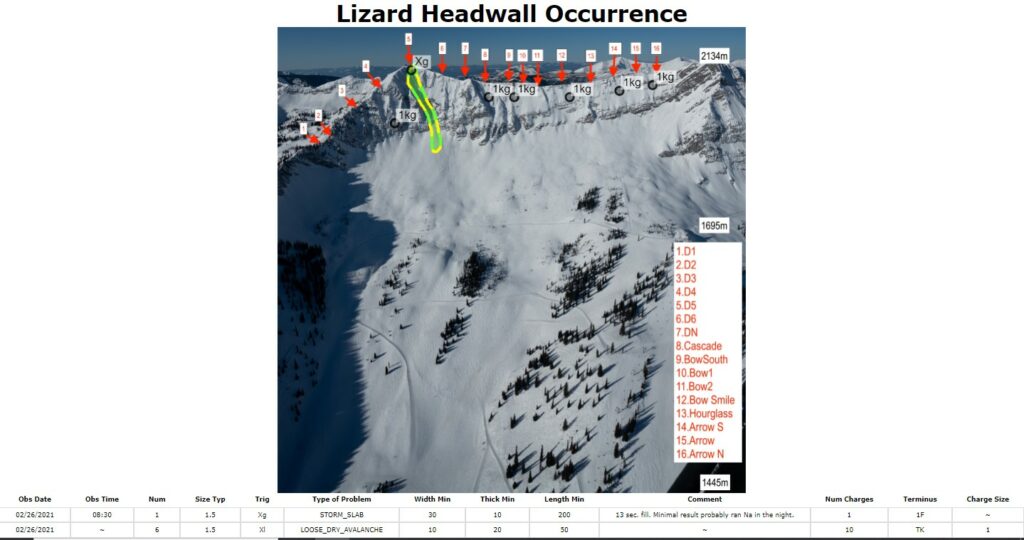
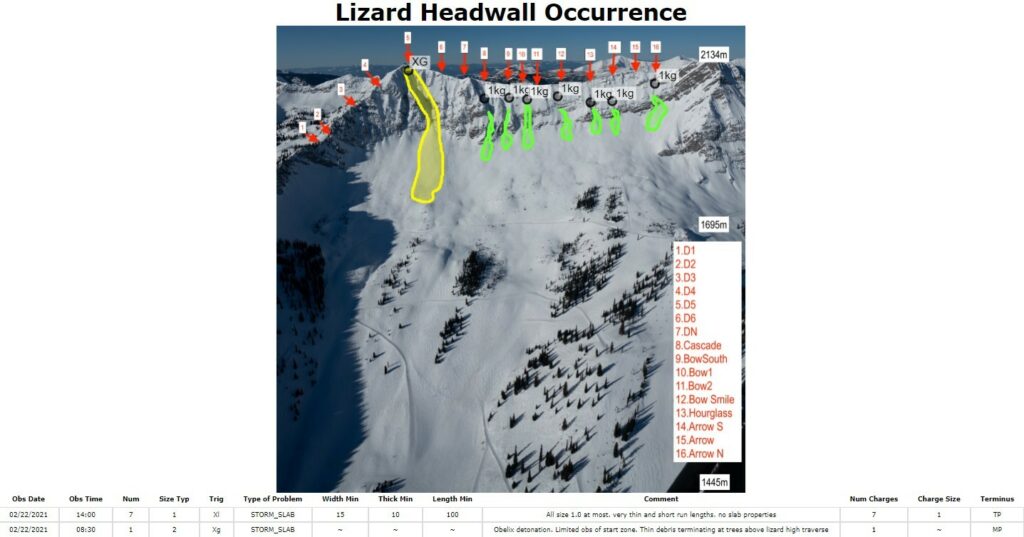
Fig. 4: A comparison of results between the O’BellX and the Avalauncher from control missions on Feb. 22, 2021, (left) and Feb. 26, 2021, (right). In both images, the results from the O’BellX are in yellow and the results from the Avalauncher are in green. The O’BellX produced consistently larger avalanches.
CONCLUSION (YOU DON’T KNOW WHAT YOU GOT TILL IT’S GONE)
FAR was gifted with this unique opportunity to trial technology that is at the leading edge of snow avalanche risk management in our own terrain. The O’bellX highlighted the possibility of immense benefits in risk reduction that a RACS could bring to our avalanche safety program. The O’bellX itself operated flawlessly; the greatest benefit was its convenience and reliability. Being able to fire it immediately before providing public clearance was incredibly valuable and knowing that the target was affected every time provided some reassurance. While we did see some evidence of avalanche size reduction in this start zone, the many days of poor visibility really did not allow for a lot of confidence in this benefit.
Though we chose not to purchase it at this time, the MND TAS gas-based family of RACS proved reliable and functioned as promised. The key benefits were the obvious ones: remote firing and lack of actual explosives required for its operation both brought high value.
Looking to the future and reflecting on the opportunity and experience we were given through these two seasons, a single O’bellX unit may not have been sufficient for our needs; however, we have now been presented with an option for solving some of our larger overhead hazard problems should we face regulatory, public expectation, or management expectation changes in the future.
We would once again like to thank MND TAS, Avatek and Phil Hein, Chad Rigby and Mountaintek, and the folks who valiantly attempted to bring the ISSW to Fernie for providing us with this opportunity. I would also like to thank Steve Brushey and Scott Garvin from BC MoTI for their help with our safe operating procedures.

Fig. 5: A look at all O’BellX results up to mid-February, 2022.

